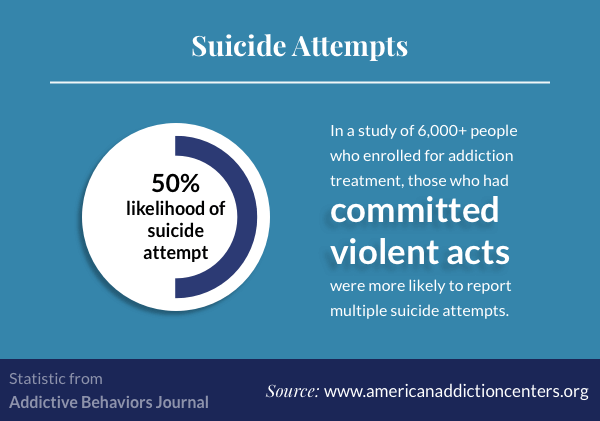Others might need very little psychological healthcare however need some form of continued formal drug abuse treatment. For individuals with SMI, continued treatment frequently is called for; a treatment program can provide these customers with structure and varied services not usually available from shared self-help groups. Upon leaving a program, customers with COD always ought to be encouraged to return if they need assistance with either condition.
Routine informal check-ins with clients also can assist alleviate potential problems prior to they end up being serious sufficient to threaten healing. A great continuing care plan will consist of actions for when and how to reconnect with services. The plan and arrangement of these services also makes readmission simpler for customers with COD who require to come back.
Significantly, drug abuse programs are carrying out follow-up contact and periodic groups to monitor client progress and examine the need for more service. This area focuses on 2 existing outpatient models, ACT and ICM (both from the psychological health field) and the difficulties of employing them in the drug abuse field.
4 Easy Facts About How Much Did The Addiction Treatment Industry Spend In Google Adwords In 2016 Described
Due to the fact that service systems are layered and difficult to negotiate, and since individuals with COD need a large range of services but frequently lack the knowledge and ability to access them, the utility of case management is acknowledged widely for this population. Although ACT and ICM can be thought of as similar in numerous functions (e.
For that reason, each is explained separately listed below. Developed in the 1970s by Stein and Test (Stein and Test 1980; Test 1992) in Madison, Wisconsin, for clients with SMI, the ACT design was created as an extensive, long-term service for those who hesitated to take part in standard treatment techniques and who needed substantial outreach and engagement activities.
1998a ; Stein and Santos 1998). ACT programs usually employ extensive outreach activities, active and continued engagement with customers, and a high strength of services. ACT highlights shared decision making with the client as vital to the customer's engagement process (Mueser et al. 1998). Multidisciplinary groups consisting of specialists in crucial locations of treatment provide a variety of services to customers.
All about Being Supportive Of Pregnant Women Seeking Addiction Treatment How To Be Supportive
The ACT team offers the client with useful support in life management as well as direct treatment, frequently within the customer's home environment, and stays responsible and available 24 hours a day (Test 1992). The team has the capability to magnify services as needed and might make several sees every week (or perhaps per day) to a customer.
Group cohesion and smooth working are crucial to success. The ACT multidisciplinary team has actually shared obligation for the entire defined caseload of clients and fulfills often (ideally, teams fulfill day-to-day) to make sure that all members are fully current on scientific issues. While staff member might play various functions, all are familiar with every customer on the caseload.
Examples of ACT interventions consist of Outreach/engagement. To involve and sustain clients in treatment, therapists and administrators must develop several means of attracting, engaging, and re-engaging customers. Frequently the expectations put on customers are very little to nonexistent, specifically in those programs serving extremely resistant or hard-to-reach customers. Practical support in life management.
The 5-Second Trick For Medical Doctors Spend How Much Addiction Treatment
While the function of a counselor in the ACT technique consists of standard therapy, in numerous instances substantial time also is spent on life management and https://transformationstreatment1.blogspot.com/2020/07/anxiety-disorders-treatment.html behavioral management matters. Close monitoring. For some clients, particularly those with SMI, close tracking is required (what is the best treatment for heroin addiction). This can consist of (Drake et al. 1993): Medication guidance and/or managementProtective (representative) payeeshipsUrine drug screens Counseling.
Crisis intervention. This is provided during extended service hours (24 hours a day, ideally through a system of on-call rotation). 1. Services provided in the neighborhood, a lot of frequently in the client's living environment2. Assertive engagement with active outreach3. High strength of services4. Small caseloads5. Continuous 24-hour responsibility6. Group technique (the complete group takes obligation for all customers on the caseload) 7.
Close work with assistance systems9. Connection of staffingWhen dealing with a customer who has COD, the goals of the ACT design are to engage the customer in a helping relationship, to help in meeting standard requirements (e. g., real estate), to stabilize the client in the neighborhood, and to provide direct and integrated substance abuse treatment and mental health services.
Examine This Report on What Is The Best Treatment Center For Addiction
The crucial elements in this evolution have beenThe usage of direct substance abuse treatment interventions for customers with COD (frequently through the addition of a compound abuse treatment counselor on the multidisciplinary group) Adjustments of standard mental health interventions, consisting of a strong concentrate on the relationships in between mental health and substance usage concerns (e.
Restorative interventions are customized to meet the client's existing stage of modification and receptivity. When modified as described above to serve customers with COD, the ACT design can consisting of clients with higher mental and functional impairments who do not fit well into many conventional treatment methods. The characteristics of those served by ACT programs for COD include those with a substance use condition andSignificant mental disordersSerious and persistent mental illnessSerious functional impairmentsWho prevented or did not respond well to traditional outpatient psychological health services and substance abuse treatmentCo-occurring homelessnessIn addition to, and perhaps as an effect of, the attributes mentioned above, clients targeted for ACT often are high utilizers of pricey service shipment systems (emergency clinic and healthcare facilities) as instant resources for mental health and drug abuse services.
The basic consensus of research study to date is that the ACT design for mental illness works in minimizing hospital recidivism and, less regularly, in improving other customer outcomes (Drake et al. what is the medical model of addiction treatment. 1998a ; Wingerson and Ries 1999). Randomized trials comparing customers with COD appointed to ACT programs with similar clients designated to basic case management programs have demonstrated better outcomes for ACT.
The Ultimate Guide To How Many People Not Recieve Addiction Treatment

1998a ; Morse et al. 1997; Wingerson and Ries 1999). It is essential to keep in mind that ACT has actually not worked in decreasing compound use when the compound usage services were brokered to other service providers and not offered directly by the ACT group (Morse et al. 1997). Researchers also thought about the cost-effectiveness of these interventions, concluding that ACT has better client outcomes at no greater expense and is, for that reason, more affordable than brokered case management (Wolff et al.
Other studies of ACT were less constant in showing enhancement of ACT over other interventions (e. g., Lehman et al. 1998). In addition, the 1998 study pointed out formerly (Drake et al. 1998b ) did disappoint differential improvement on numerous steps essential for establishing the effectiveness of ACT with CODthat is, retention in treatment, self-report measures of compound abuse, and stable real estate (although both groups improved).
More analyses suggested that customers in high-fidelity ACT programs revealed greater decreases in alcohol and substance abuse and obtained greater rates of remissions in substance usage conditions than customers in low-fidelity programs (McHugo et al. 1999). However, ACT is a recommended treatment design for customers with COD, especially those with serious psychological conditions, based upon the weight of proof.
An Unbiased View of Medical Doctors Spend How Much Addiction Treatment

Usage active and continued engagement methods with customers. Utilize a multidisciplinary team with proficiency in substance abuse treatment and mental health. Provide useful support in life management (e. g., housing), as well as direct treatment. Highlight shared decisionmaking with the client. Provide close monitoring (e. g., medication management). Maintain the capacity to heighten services as required (including 24-hour on-call, numerous check outs each week).